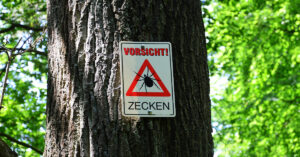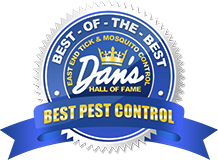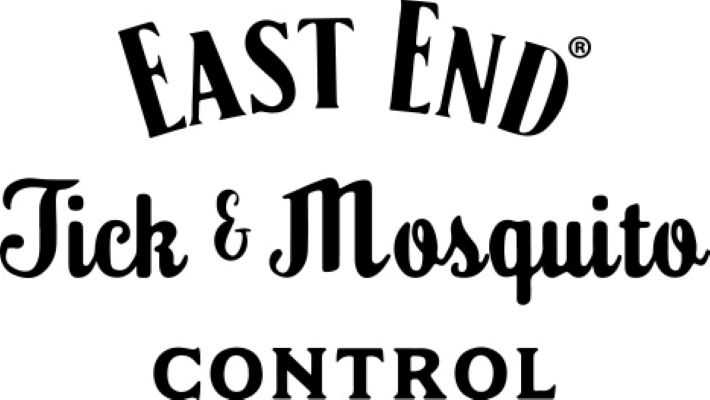
In the past 20 years, cases of some tickborne illnesses have nearly doubled. It seems like it’s impossible to avoid these parasitic arachnids – even in urban areas. Is there anywhere in the world that’s safe from ticks?
Now Offering a New Mosquito Repellent System!

In the past 20 years, cases of some tickborne illnesses have nearly doubled. It seems like it’s impossible to avoid these parasitic arachnids – even in urban areas. Is there anywhere in the world that’s safe from ticks?


While many diseases that humans get aren’t necessarily transferable to animals in the same ways… cats and dogs are all too vulnerable to tick bites. Our furry companions are just as susceptible to some of the worst results of a bite – including contracting Lyme disease and Tularemia. So how do we keep ticks away from our pets?
There are a number of natural remedies you can implement to naturally repel ticks from your dog. By combining certain essential oils with water and vodka, you can create a natural tick-repellent spray to apply to your pooch. Please keep in mind that many essential oils are not safe to use with your cat, so this method will not apply to them. And regardless, you should discuss this with your veterinarian before applying any essential oils to your dog.
Citrus can also repel ticks. A similar concoction could be made by combining citrus elements (such as lime juice) with water and witch hazel and then using that as a spray instead. This should be safe for cats but it’s still important to consult with a veterinarian before implementing this tick-warding tactic.
Apple cider vinegar is another natural tick repellant you can use with your dog. You can either add a small amount to your dog’s water or make a similar kind of repellent spray as described above. A spray like that could be applied in the morning before going on a walk. It’s important to keep in mind that while apple cider vinegar might help to repel ticks, this and other natural methods do not kill them.
While you should always be vigilant about checking for ticks when your pet has been exposed to a high-risk tick area… the only way to truly have peace of mind is to consult with pest protection professionals that can remove the risk of ticks from your property.
Ticks are not only a menace to people, but to pets as well. We here at East End Tick Control® understand that your pets are your family, and we provide quality pest protection that’s mindful of the health of the animals you love. Comfort and peace of mind are just a phone call away. For those living near Southampton, please call (631) 287-9700. If you are closer to East Hampton, please call (631) 324-9700. If you reside near Southold, please call (631) 765-9700. You can also send us a message through our website and we will get back to you as soon as possible.

[Continue Reading]

[Continue Reading]

Ticks are more closely related to spiders than they are to insects. Like spiders, they are a part of the arachnid family, along with mites and scorpions. Both spiders and adult ticks have eight legs and lack antennae and wings. Can ticks spin webs? Unlike their spider cousins, ticks are opportunistic predators, waiting for their prey to wander close enough to latch onto.
Both spiders and ticks are arachnids, but ticks aren’t spiders; rather. Ticks are a mite species, and mites are tiny, primarily parasitic pests that often cause itchy bites that can transmit various diseases.
Spiders and ticks are built differently. Both are arthropods– invertebrates with external skeletons and jointed legs, but spiders have segmented bodies while ticks do not, and Spiders have a separate cephalothorax and abdomen. Ticks have small, flat, unsegmented bodies that enable them to attach easily to a host.
These arachnid cousins have very different diets as well. Most spiders consume insects, but some will eat nectar, pollen, seeds, leaves, web silk, or dead arthropods. Some even eat their exoskeleton after shedding it! Larger spider species may consume small lizards, birds, bats, or fish. Humans, pets, and livestock are only part of the spider diet in monster movies, and they do not seek out humans as dietary staples.
On the other hand, ticks feed on the blood of mammals – people, pets, wild animals – and livestock, as well as on birds, reptiles, and amphibians. They are parasites that latch onto their host with their mouthparts, feasting on a blood meal.
Unlike ticks, spiders rarely transmit infectious diseases, and their bites are usually harmless. The exceptions are black widow and brown recluse spider bites that transmit toxic venom, causing pain, flu-like symptoms, skin lesions, and neurotoxicity.
Ticks, on the other hand, are a vector of multiple diseases. It’s estimated that more than half the ticks on Long Island carry Lyme disease. This bacterial disease is transmitted to humans through the bite of the black-legged tick, causing flu-like symptoms and a distinctive bullseye rash. East End residents are at risk of tick-borne diseases, including anaplasmosis, babesiosis, ehrlichiosis, tularemia, and Rocky Mountain spotted fever, so closely monitor the results of any tick encounters.
East End Tick Control® is Eastern Suffolk County’s most-experienced tick control company, providing the East End with effective tick extermination treatments since 1997. Protect your family from disease-carrying ticks year-round by requesting a free estimate now or by calling our Southampton office at (631) 287-9700, our East Hampton office at (631) 324-9700, or our Southold office at (631) 765-9700.

[Continue Reading]

Tick surveillance is the scientific collection of ticks and tick-related environmental samples. Its goal is to identify all tick species in a specific area and test for tick-borne pathogens. Entomologists document, collect, and study the ticks and samples, and then they report the data to health agencies for analysis.
Tick surveillance data monitors the presence and number of ticks in a specific area and follows how this information changes over time. It also documents infection levels in disease-carrying tick species.
Public health agencies use this information to make strategic decisions about tick control programs and resource allocation. Additionally, the data is used to communicate to the public the likelihood of encounters with pathogen-carrying ticks in the area of interest.
Tick surveillance programs do not monitor or report https://www.health.ny.gov/diseases/communicable/lyme/tick-borne disease in human or veterinary patients; that data is gathered separately through state and local health departments. Personal identifiers are then removed, and information is shared with the CDC through the National Notifiable Diseases Surveillance System (NNDSS).
It is critical to know where ticks are active to properly assess the risk of tick-borne diseases in humans and animals. Some illnesses, including Lyme disease, anaplasmosis, ehrlichiosis, babesiosis, and Rocky Mountain spotted fever, can be debilitating or fatal to humans.
Like any scientific enterprise, the information resulting from tick surveillance experiences a lag between data collection and publication, and promulgation. Tick populations are constantly shifting and changing, so it is wise for residents of areas where ticks may be present to be vigilant.
Call East End Tick Control® if you see ticks or suspect their presence on your property or home, call East End Tick Control®. We are Eastern Suffolk County’s most-experienced tick control company, providing the Twin Forks and East End with the most effective pest control treatments since 1997. Protect your family from disease-carrying ticks year-round by requesting a free estimate now or by calling our Southampton office at (631) 287-9700, our East Hampton office at (631) 324-9700, or our Southold office at (631) 765-9700.

Epidemiologists in Minnesota conducted a study a few years ago that showed heavy snowfalls might protect ticks from the frigid cold necessary to kill them. So when the snow melts, deer ticks might be very abundant.
But what do deer ticks in Minnesota have to do with ticks on Long Island? While the climate might not be the same, the principle is that the melting snow and warming temperatures might increase tick activity that people aren’t expecting.
As the snow melts and the temperatures increase, it’s more important than ever to check yourself, your family, and your pets for ticks after you’ve been outside. Tick activity is on the rise, even if it isn’t “tick season” just yet.
While there will be some variation year over year, the short answer is yes. Due to climate change and global warming, more ticks survive through winter leading to earlier tick seasons and more ticks.
A 2008 study discovered that climate change significantly influences the spread and population growth of ticks all over the world. In short, as we start seeing shorter winters, we’re also going to know a lot more ticks. Without frigid temperatures to kill them off, the tick population is just going to continue to look for people and animals to feed on.
Yes, cold weather can help decrease the population of ticks, but it has to be colder than most people like and for a more extended period. The temperature must be below 10 degrees for multiple consecutive days for a significant die-off in ticks.
Worse yet, ticks like it when it’s wet, so melting snow is just about perfect for them. The temperature has to get above freezing for the snowmelt and ticks like humidity, and they prefer humidity at 85 percent or higher, so wet melting snow is good for them.
In addition to that creepy-crawly feeling that ticks bring, they can also be very dangerous to your family’s health and your pet’s health. In 2019, more than 8% of the ticks from Suffolk County submitted for testing at the SUNY Center contained some vector-borne pathogen. With the increasing number of ticks, the risk of infection also grows.
Are you looking for other ways to protect your family from ticks and the diseases they carry? Contact us to discuss mitigation options. East End Tick and Mosquito Control® is Suffolk County’s most-experienced pest control company. For more than 20 years, we have been using the most effective extermination methods to protect yourself and your family. Request a free estimate now or call our Southampton office at (631) 287-9700 , our East Hampton office at (631) 324-9700, or our Southold office at (631) 765-9700.

[Continue Reading]



